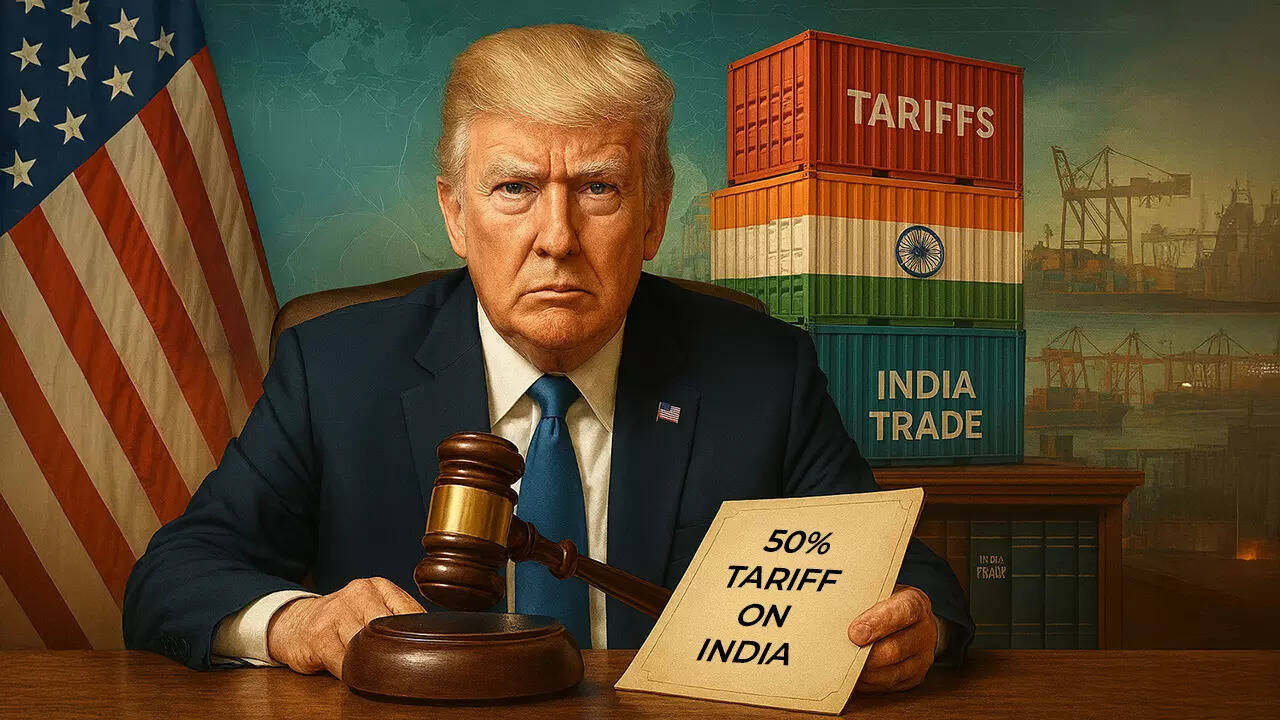US tariffs on Indian goods, including penalties for Russian oil, could cost India $55-60 billion, impacting textiles, footwear, and jewelry sectors, according to Jefferies’ Chris Wood. He believes the tariffs are triggered by Trump’s frustration at being exclusion from India-Pakistan mediation and irritation over the Ukraine conflict.
India Faces a Tariff Tightrope: Navigating Trump’s Trade Legacy
The global trade landscape is rarely a placid lake. It’s more like a turbulent ocean, with currents shifting unexpectedly and rogue waves appearing out of nowhere. And for India, the waves generated during the Trump administration still ripple through its economy, threatening to capsize carefully laid plans. While headlines often focus on the broad strokes of international diplomacy, the real impact lies in the nitty-gritty details – tariffs, trade barriers, and the sometimes-unpredictable nature of political decisions.
Christopher Wood, a keen observer of these economic tides, recently shone a light on the potential damage these lingering tariffs could inflict on India. We’re not talking about a minor inconvenience here; Wood estimates a staggering $55-60 billion hit to the Indian economy. That’s a number that demands attention and a deeper dive into the forces at play.
So, what’s behind this potentially devastating blow? It appears that some of the trade actions taken by the previous US administration were, shall we say, less about strategic economic policy and more about… personal feelings. Wood suggests that these tariffs, particularly those impacting India, might have been driven by a more personal dynamic involving then-President Trump.

The implications are significant. When trade policies are swayed by personal grievances rather than careful economic analysis, they create instability and uncertainty for businesses. Companies struggle to make long-term investments and strategic decisions when the rules of the game can change on a whim. Imagine trying to build a house on shifting sands – that’s the challenge many Indian businesses face when exporting to the US under the shadow of unpredictable tariffs.
This isn’t just about economics; it’s about relationships. A strained trade relationship with the US, one of India’s largest trading partners, could have far-reaching consequences for diplomatic ties and future collaborations. Maintaining a positive and predictable trade environment is crucial for fostering trust and cooperation between nations.
Impact on Key Sectors and the Future of Indian Exports
Which sectors are most vulnerable to this tariff pressure? While the specifics remain complex and dependent on the exact nature of the tariffs, industries that heavily rely on exports to the US are undoubtedly at the greatest risk. This includes textiles, pharmaceuticals, and engineering goods, all vital contributors to the Indian economy. These sectors are already facing increasing competition from other emerging markets, and punitive tariffs only exacerbate the challenge.
The potential $55-60 billion hit isn’t just a theoretical figure; it translates into lost jobs, reduced investments, and slower economic growth. It also highlights the need for India to diversify its export markets and reduce its reliance on any single trading partner. Building stronger trade relationships with other regions, such as Europe, Asia, and Africa, is crucial for mitigating the risks associated with volatile trade policies.
How Can India Navigate this Tariff Maze?
So, what can India do to navigate this complex and challenging situation? The answer isn’t simple, but it involves a multi-pronged approach.
* Diplomatic Engagement: Maintaining open lines of communication with the US administration is paramount. This includes engaging in constructive dialogue to address concerns and find mutually beneficial solutions.
* Diversification of Export Markets: Actively seeking new export opportunities in other regions is essential. This requires investing in market research, building strong trade relationships, and adapting products and services to meet the needs of different markets.
* Boosting Domestic Manufacturing: Strengthening India’s domestic manufacturing base can reduce its reliance on exports and create a more resilient economy. Initiatives like “Make in India” can play a vital role in this regard.
* Addressing Trade Imbalances: Tackling trade imbalances and ensuring fair trade practices is crucial for leveling the playing field. This requires addressing issues such as non-tariff barriers and ensuring access to foreign markets.
The Road Ahead: A Call for Prudence and Proactive Measures
The legacy of tariffs imposed during the Trump administration continues to cast a long shadow over India’s trade prospects. While the situation presents a significant challenge, it also offers an opportunity for India to strengthen its economic resilience and diversify its global partnerships. By proactively addressing these challenges through diplomatic engagement, market diversification, and domestic manufacturing initiatives, India can navigate this tariff maze and secure a brighter economic future. The path forward requires prudence, adaptability, and a unwavering commitment to building a robust and diversified economy.







